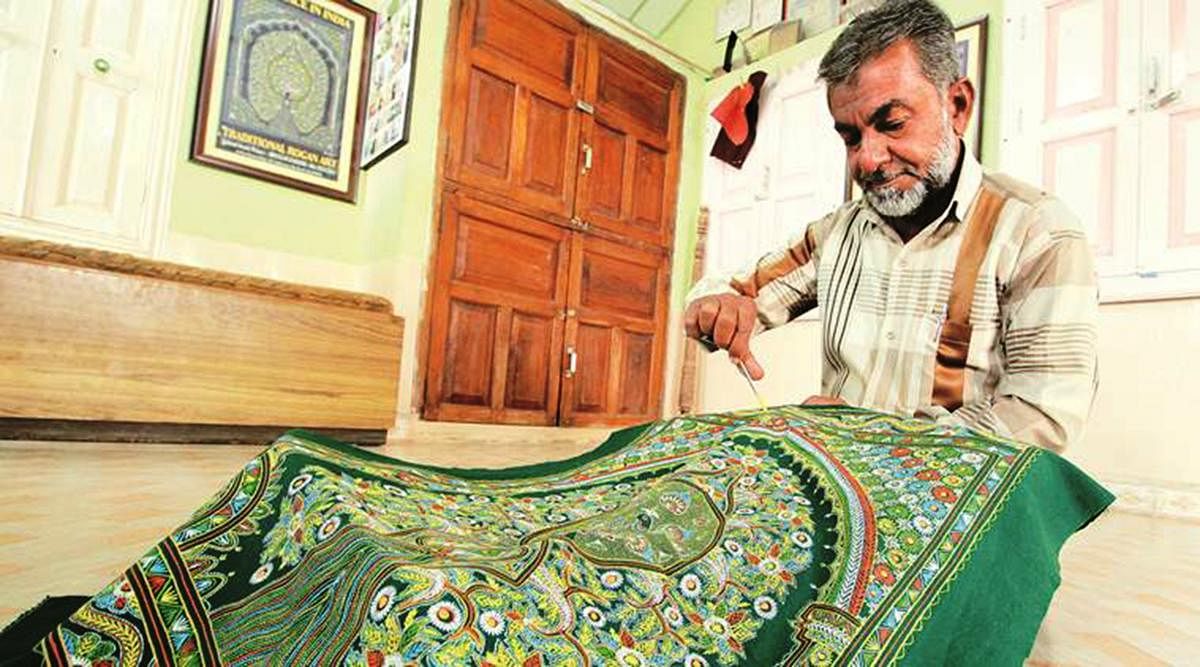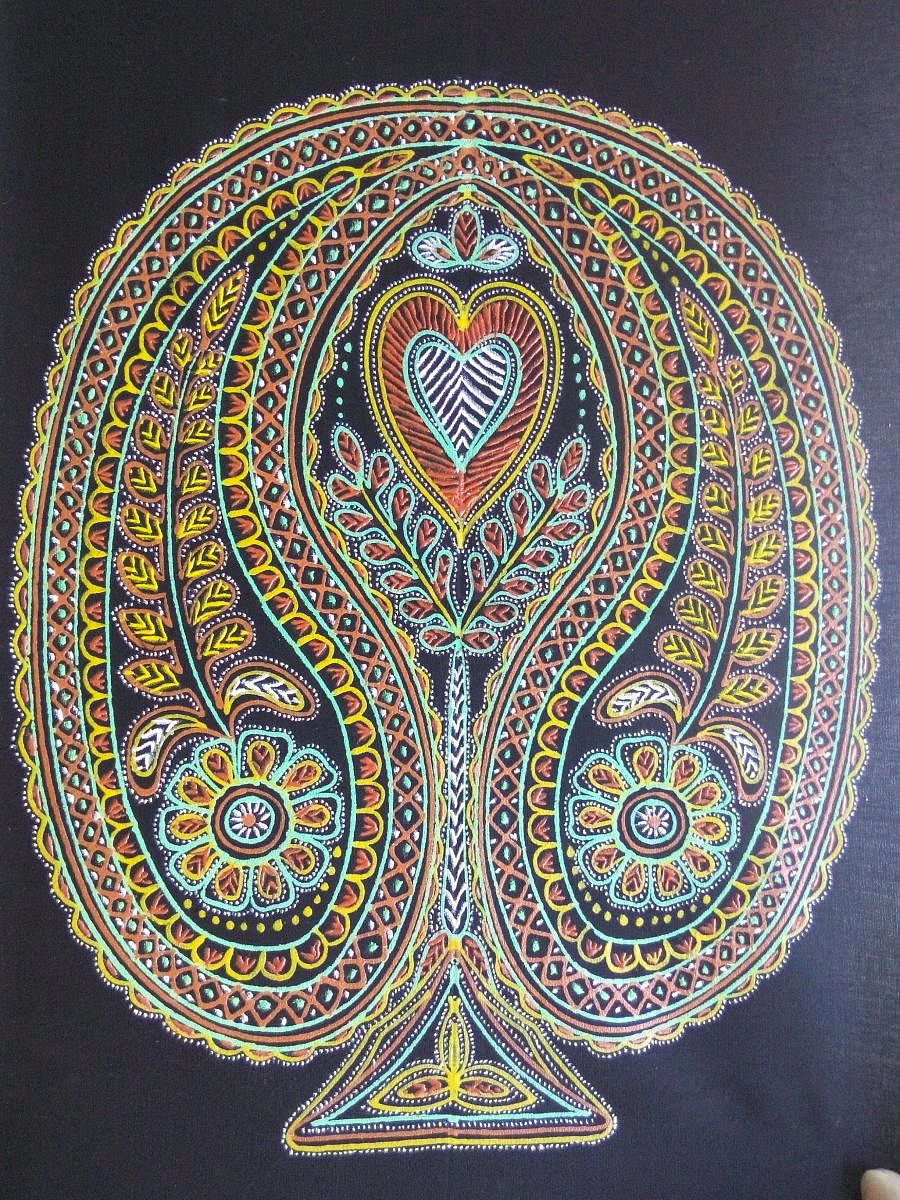

India’s art heritage is as diverse as its people. Rogan craft, an art form which is over 300 years old, is perhaps one of the few testaments to this living heritage.
An art form that, today, lives out of one family in Nirona village of Kutch in Gujarat, is a technique that involves meticulous handcrafting of fabrics that could take hours to complete, if one is trained.
The word ‘rogan’ literally means ‘oil-based’ in Persian. But given our feeble efforts at preservation, this exquisite craftsmanship is on the verge of extinction today.
“The craftsmanship involved in Rogan is not simple at all. Hours of meticulous work is put into designing an A4-sized fabric, if one is trained. It can take days for an amateur. The only tool involved is a stick,” says Iti Tyagi, founder, Craft Village.
Woman to the fore
A designer by profession, Tyagi is one of the few people who are working tirelessly to preserve Rogan, among 10 other endangered crafts of India. Recently, she was also conferred with the Nari Shakti Puraskar for her efforts. “Craft is a large sector, but it is not treated the way fashion or design is. We go to haats or small markets and negotiate, and it disturbs me a great deal,” she adds.
The art nearly died out sometime in the late 20th century as it was only being practised by the Khatri family, a Muslim community living in Kutch. Today, it is headed by Abdul Gafur Khatri, a Padma Shri awardee.
Paint made from boiled oil and vegetable dyes are laid down on fabric using either a metal stick (for printing) or a stylus (for painting), a secret recipe that runs in the family. Natural colours are mixed with the thick residue that is formed and used to make free-hand designs on cloth.
The process involves carefully lining the cloth with motifs. The family gives live demonstrations on how the painting is done. Back in the day, these beautiful designs adorned bridal trousseau, tablecloths, bedsheets and ghagra-cholis. “The immediate thought that comes to one’s mind is that of applying henna on one’s palms. If you’re trained, you finish fast, but it could takes hours, and even days, for an amateur,” adds Tyagi.
Any mistake cannot be corrected, and the piece has to be discarded. Traditional motifs include floral, geometrical and calligraphic designs.
The skills at play range from concentration to aesthetics, hand-eye coordination, and patience, to name only a few.
Why, then, is it so hard for us to uplift our own craftsmanship over branded contemporary designs from the Western world? One cannot live off mere appreciation. After all, it took nine generations of craftsmen to get Rogan the endangered status and some bit of the recognition it has today.
“These arts are not projected as serious arts. One buys contemporary arts from galleries, but these things you will only find in a haat. The craft can also be the part of a gallery, right? They must get the respect they deserve. They need to move above fairs and melas, and talk about actual sustenance of livelihood,” says Tyagi.
Places to go
Tyagi’s work has taken her places in search of handicrafts and the stories that weave them together. “When I started out, most of my work involved craftsmanship. It involved exporting to companies like Walmart, Ikea, Pottery Barn etc. I realised I was drawn to anything that was handcrafted. These things were intertwined in heritage, histories and family lineages. There was always a strong story holding these pieces together,” adds Tyagi.
Three years ago, she started Craft Village with a purpose to introduce India’s rare craft forms to the urban population, and make them aware of the craftsmanship.
Rogan is one of those few styles that require immediate attention. Pinjra- Kari from Kashmir, Kharad from Kutch, Bidri from Bidar, Kawad from Rajasthan, Tangaliya weave from Gujarat, Chamba Rumal from Himachal Pradesh are a few others that face problems akin to Rogan. “Maybe I created a little change in this chain of system. I don’t think I have done enough, though. One needs to leave the comfort zone and see things for what they are. Even to create one aspect of sustainability for these people is a start enough,” says Tyagi.